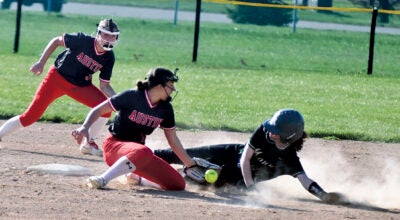Minnesota author’s pioneer book comes back to life
Published 8:15 am Friday, October 31, 2014
ST. PAUL — Carol Ryrie Brink grew up listening to her grandmother’s stories of pioneer life on the western Wisconsin frontier. She wove them into one of the most beloved children’s books of the 1930s, “Caddie Woodlawn.”
Caddie was an 11-year-old girl of action, a tomboy and natural leader in the wilderness. Brink’s book captured that independent era, one that many longed for in the depths of the Great Depression. The book won the coveted Newbery Medal for children’s literature in 1936.
Brink wrote prolifically during the first half of the 20th century while raising two children in Minnesota. Changing literary tastes, however, pushed her work to the lost end of library shelves over time, Minnesota Public Radio News reported. She died in 1981.
But she left something very valuable behind — eight hours of hers and her grandmother’s stories on tape, recorded by her biographer, Mary Reed. They are rich in detail about pioneer life, a historical trove that was lost until her son, David Brink, found it and converted the cassettes into CDs.
“At the age of 95 and being a pack rat, I have got piles and piles of stuff and it was at the back,” David Brink said recently as he tinkered with audio gear at his home in Minneapolis.
He pressed a button and the voice of his mother emerged. “…You’re gonna ask questions on the tape, aren’t you?”
The interview went on for hours on a wide range of topics from her birth to her writing to her grandmother, who raised Ryrie Brink after her parents died.
She said her parents thought she was stillborn — until her grandfather stepped in, “worked my arms up and down and blew his tobacco-y breath into me and finally got me started crying.”
Ryrie Brink and her husband lived in the Twin Cities for more than 40 years, where they raised David and his sister. Brink remembers how his mother balanced her work as a homemaker with her writing.
“When she had finished the vacuuming she’d sit down at the desk and write a chapter.”
“Caddie Woodlawn” is one of Carol Ryrie Brink’s best known works.
One of the book’s most dramatic scenes is where Caddie’s neighbors hear a rumor that nearby Indians plan to attack the settlers. The white settlers make a plan to strike first and kill the Indians.
“And Caddie saddled up a horse and rode to the Indian camp and warned Indian John,” said David Brink.
Indian John was the name the white people had given the leader of the native people.


